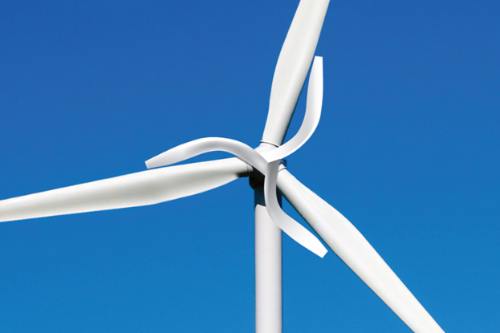As the world races toward clean energy, engineers are increasingly turning to nature for inspiration. From bird wings to whale fins, natural designs have evolved over millions of years to move through air and water with incredible efficiency. Now, those same principles are helping wind turbines capture more power from the wind.
Global Wind Power at a Glance
As of 2024, global installed wind-power capacity—both onshore and offshore—has reached approximately 1,131 gigawatts (GW), according to the International Renewable Energy Agency (IRENA). These turbines generate around 2,330 terawatt-hours (TWh) of electricity each year, meeting 8–9 percent of global electricity demand.
That means even a 1 percent improvement in efficiency could yield billions of dollars in additional energy value worldwide—an enormous impact for a small aerodynamic gain.
1. The PowerCone: Solving Root Leakage with Biomimicry
One of the most promising advances comes from Biome Renewables, whose PowerCone retrofit is designed to tackle a subtle but costly aerodynamic problem: root leakage.
In large turbines, air can leak through the small gap between the hub and blade roots. This disrupts airflow, creating turbulence and reducing power output by up to 2 percent annually.
The PowerCone—a three-bladed, co-rotating attachment fitted to the turbine hub—redirects airflow to prevent that leakage. Its design draws inspiration from two natural masters of fluid motion:
- The Kingfisher, whose beak slices into water with barely a ripple by channeling flow smoothly around its body.
- The Maple Seed, which spins gracefully as it falls, following a path of minimal air resistance.
By combining these principles, the PowerCone redistributes wind from the turbine root to the outer blade span, increasing torque, lowering cut-in speeds, and boosting overall efficiency. Field data suggests 1–2 percent gains in annual energy production (AEP) for existing turbines.
2. Tubercle Blades: Learning from the Humpback Whale
Another nature-inspired idea comes from WhalePower, a Canadian firm that studied the flippers of humpback whales.
These fins feature tubercles—bumpy ridges along the leading edge—that let whales make sharp turns and maintain lift even at high angles of attack.
Computational Fluid Dynamics (CFD) and wind-tunnel testing revealed that tubercles increase lift and reduce drag, improving the lift-to-drag ratio (L/D).
When applied to wind-turbine blades, this design translates to:
- More stable operation in turbulent wind,
- Greater energy capture, and
- The potential for smaller, lighter blades without loss of output.
3. FeatherEdge Technology: The Owl’s Silent Flight
Noise is a persistent challenge for wind energy. While mechanical noise comes from the drivetrain, the main culprit is aerodynamic noise—especially at the trailing edge of blades, where high- and low-pressure airflows collide.
Inspired by the silent flight of owls, Biome Renewables developed FeatherEdge, a serrated trailing-edge design that reduces noise while improving aerodynamics.
The company’s patented double-dip serration pattern applies a concept called phase interference—shifting sound energy from low-frequency, long-range tones into higher frequencies that are less audible to humans.
Tests show that FeatherEdge can:
- Reduce noise by 2–3 decibels,
- Lower amplitude modulation, and
- Enhance the turbine’s power curve, all within standard structural limits and certifications.
The Takeaway: Nature as Engineer
From the kingfisher’s beak and maple seed’s spin to the whale’s flipper and owl’s wing, nature continues to provide the blueprint for smarter, quieter, and more efficient wind energy.
As global wind capacity surges past the terawatt mark, even small aerodynamic gains translate into massive economic and environmental benefits. The next generation of turbines may not just work like machines—they’ll fly like birds and swim like whales.
Sources:
- International Renewable Energy Agency (IRENA, 2024)
- International Energy Agency (IEA, 2024)
- Biome Renewables technical releases
- WhalePower Corporation studies
